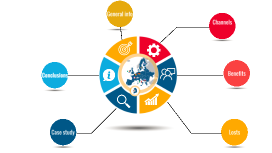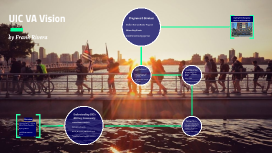UIC
Transcript: General info Introduction Subject: Industrial Clusters Economics Prof: CORO Giancarlo Students: Leonardo Baldissara: 868900 Milena Komnenovic: 893169 Achraf Ben hiba: 893805 Kristine Nikoghosyan: 998388 University-Industrial Clusters Partnership: The case study of Ann Arbor Cluster SCHEME OF PRESENTATION Introduction Collaboration channels and mechanisms Research Methodology Case Study Analyzes Discussion (Lost, Benefit) Conclusion Introduction Universities can be drivers of regional and national development, as well as universities can be considered as producers of knowledge and innovation. Regional efforts to develop industry clusters increasingly include universities as central assets. It is essential to understand the role of Universities in the innovation ecosystem and cluster formation in order to maximize academic impact and contribution STATEMENT The development of the economic and innovative capacities of country in regional, national and local level The systematic and continuous cooperation could lead The development of educational and research sphere: Development of idea of Triple Helix,(4th, 5h Helix), Smart Specialization Strategy Research methodology STAGES OF RESEARCH Theoretical research and literature review Lost-Benefit analyzes Case Study UNIVERSITY BENEFIT LOSTS Economic Economic Institutional Institutional Intellectual Intellectual INDUSTRY- Clusters BENEFIT LOSTS Economic Economic Institutional Institutional Intellectual Intellectual University of Michigan Ann Arbor Industrial Cluster Channels Channels Collaboration channels (OECD) Title Benefits BENEFITS FOR CLUSTERS AND UNIVERSITIES, GOVERNMENT Title University level: Benefits Intellectual • High levels of knowledge and information accumulation • Well-trained students • Improvement of the quality teaching Economic • Additional sources of funding • Employment opportunity Institutional • Establishment of specialized structures, centers, technoparks • Improvement of technological equipment in universities • Improvement of the university image Industry/cluster level: Benefits Intellectual • Access to a well-qualified labor • Strengthen research, innovation and technology development • Joint publications Economic • Boost company’s sales • Higher productivity • Saving money traditionally invested in R&D • Reduction of expenses on trainings • Access to Cheaper labor Institutional • Ability to use research infrastructure • Improving technological performance • Strengthening their status and image by connecting with major universities Research is being transferred to industry creating economic growth Governments are supporting this interaction due to the fast changing technological and competitive environment Government level: Benefits Losts DISADVANTAGES FOR INDUSTRY CLUSTERS AND UNIVERSITIES Collaboration disadvantages for Universities Intellectual Relocation of academics from university to cluster IPR conflicts Economic Financial dependency Institutional Bureaucratic overload Strategic divergences and conflict Title Title Collaboration disadvantages for Clusters Intellectual IPR conflicts Economic Cost of additional resources during training Ineffective cooperation Institutional Differences in working styles (firms are more flexible) Case study CASE STUDY Introduction Ann Arbor as a place to learn, live, work and innovate in high-tech Several hundred life sciences and information technology firms University of Michigan as prime example of coordinating R&D and cluster specialization. University of Michigan with 35,446 employees is a top employer in the region. University University of Michigan In the fall of 2015, it was named as the world’s 5th most innovative university. In 2021, 1.58 billion in research volume. Industry sponsored U-M research innovations totaling $ 109 million. In the same year 23 startups, 502 inventions and a record 287 license and option agreements with companies. OPPORTUNITIES Large number of research institutes Active technology transfer system Grant opportunities for both students and professionals seeking to continue their venture. The Wolverine Venture Fund is the first student-run venture capital fund. Clusters Ann Arbor Life Science Cluster Approx. 280 life sciences firms that employ more than 6,000 people are located in the Ann Arbor region. U-M and its Life Sciences Institute (LSI) – cornerstone of the region’s life sciences success. Michigan Medicine, and North Campus Research Institute critical role in launching life sciences startups. New venture - partnership with major international pharmaceutical research company Sun Pharma Advanced Research Company (SPARC). Thriving companies and laboratory space also support this region. Ann Arbor IT Zone Cluster CONCLUSIONS Conclusions Title Conclusions University must have a significant base of research aligned with the needs of that cluster The role of geographical proximity for tacit knowledge exchange and technology transfer considered as a basic for the development

















